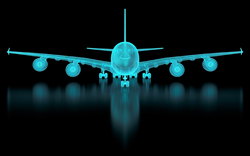Optimised aircraft loading simulations
Detailed structural models of aircraft and their components decrease the risk of design modification at a later date and reduce the need for expensive tunnel testing. Load cases due to flight manoeuvres and dynamic gusts are not known a priori. Therefore, a large number of test conditions are required to accurately capture maximum loads and assess the stresses experienced by in-service aircraft. Currently, every load calculation cycle takes more than six weeks and previous experience is of limited value in modelling new aircraft configurations without compromising safety. EU-funded scientists developed simulation technologies with better accuracy and reduced computational load through work on the project 'Future fast aeroelastic simulation technologies' (FFAST)(opens in new window). Researchers focused on three key aspects to accelerate future aircraft design. The starting point was improved identification of the flight conditions resulting in maximum loads on aircraft structures. This was followed by extraction of reduced-order models (ROMs) of unsteady aerodynamic and aeroelastic loading from more complex full-order models. Finally, the ROMs were used to accelerate full-order calculations. The result is much higher fidelity data at a cost close to that of currently used low fidelity methods. All methods developed within the scope of FFAST provide significant computational savings compared to full-order methods. Although different methods were developed by different partners, combining these technologies will speed-up the design process by more than 90 %. The end-result would be improved ability to design greener aircraft resulting in reduced emissions with lower design costs, ensuring the competitiveness of the EU aerospace industry.







